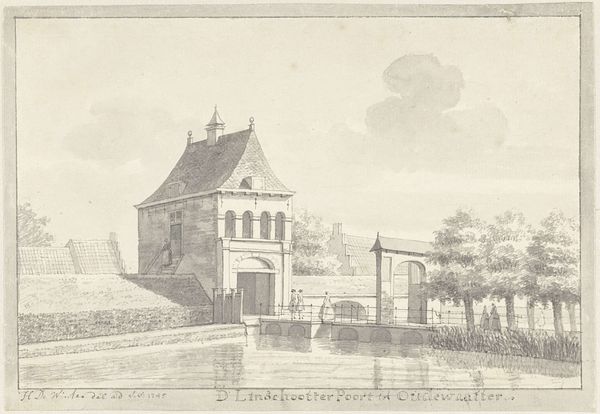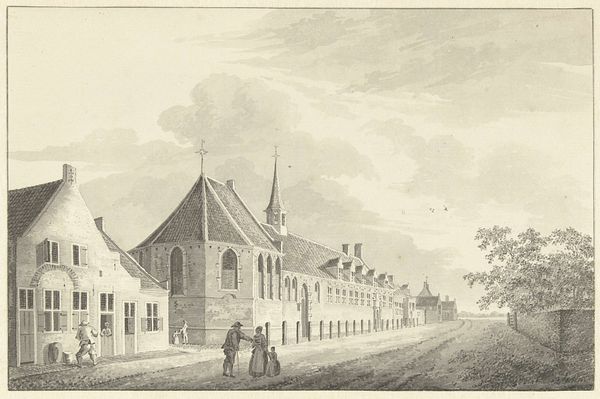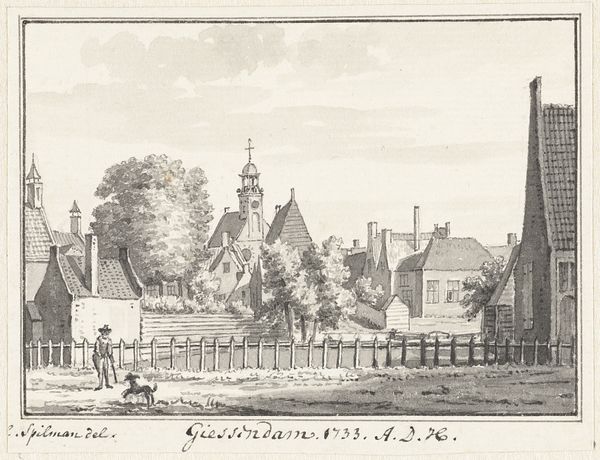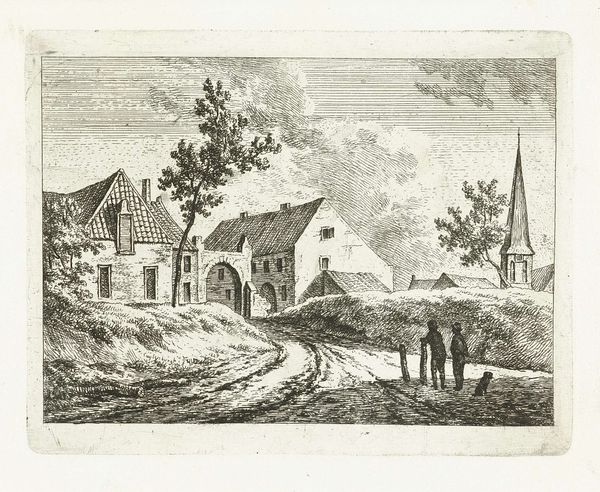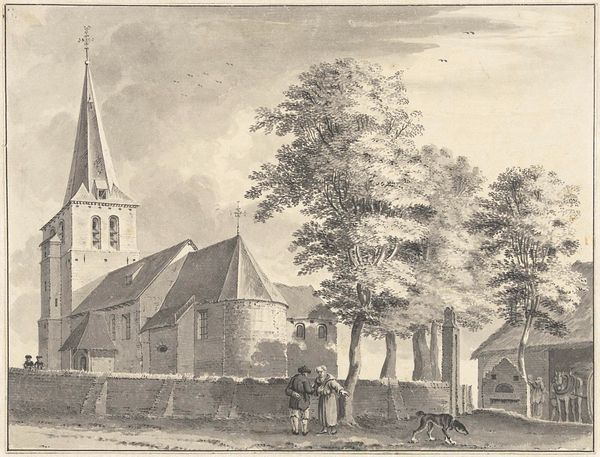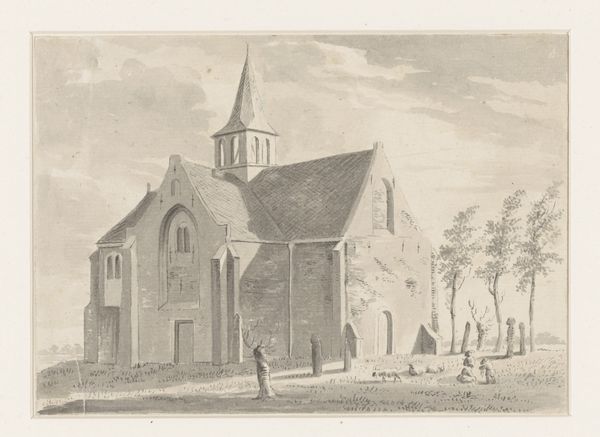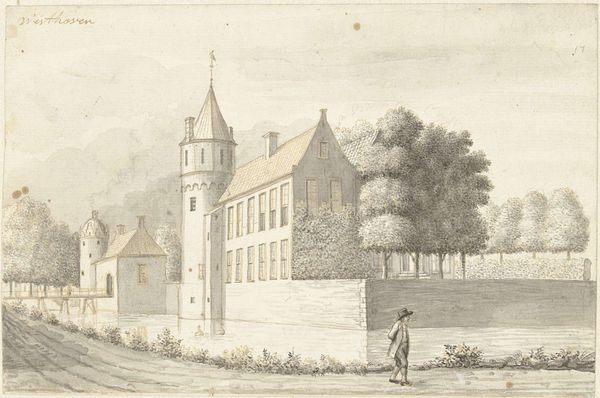
Dimensions: height 156 mm, width 223 mm
Copyright: Rijks Museum: Open Domain
Curator: Here we have Hendrik de Winter's 1745 ink drawing, "The Orphanage and the Warehouse at Oudewater," now residing at the Rijksmuseum. A classic Dutch scene rendered with such delicate lines. What's your first impression? Editor: A wistful calm. The subdued greyscale tones create this almost dreamlike atmosphere. It’s the kind of image that invites quiet reflection. The architecture seems to breathe history, doesn’t it? Curator: Absolutely. Orphanages, in art, frequently use architecture to imply security or protection; like a solid promise etched in stone. Consider, here, the careful, almost loving detail rendered on these solid, rectangular structures—how might this communicate a civic intention? Editor: It is interesting to consider the symbols chosen. Notice how the orderly rows of windows resemble watchful eyes. Perhaps symbolizing vigilance, care or surveillance over those residing within? Even the solitary figure seemingly measuring or maintaining the perimeter amplifies this feeling of curated protection. Curator: An intriguing point about vigilance and curated protection through symbolism. I love that! The man measuring - and thus, claiming or designating - along the perimeter hints at ownership or, at the very least, meticulous civic planning. The controlled perspective directs our eye, positioning the warehouse alongside the orphanage—emphasizing this link of civic responsibility in practical storage. Editor: A tangible embodiment of community interwoven; those parallel responsibilities of care and provision. These simple visual relationships express volumes about social priorities. Also, isn't it interesting that the tallest, most elaborate feature of this architectural landscape is not the institutions themselves, but the large, dominating tree in the middle? To me, the prominence and care given to this single tree is a reflection on the community's vision of natural abundance for a prosperous future. Curator: It definitely softens the rigid geometry of the buildings, doesn't it? You know, spending time with this artwork highlights a central question: How much is revealed about a culture's values when examining their careful arrangement of space? Editor: Precisely. And De Winter’s piece seems to whisper that story beautifully through its meticulous lines and carefully considered forms.
Comments
No comments
Be the first to comment and join the conversation on the ultimate creative platform.

